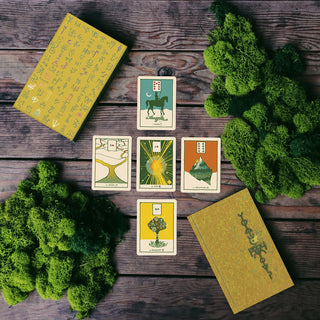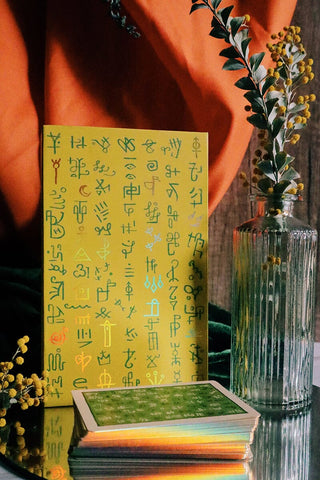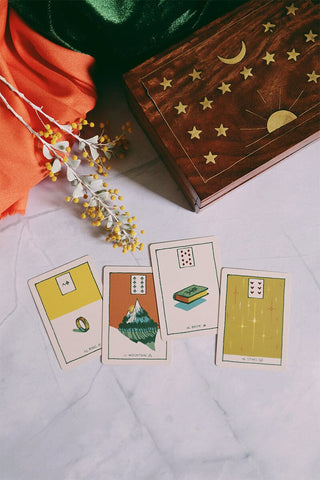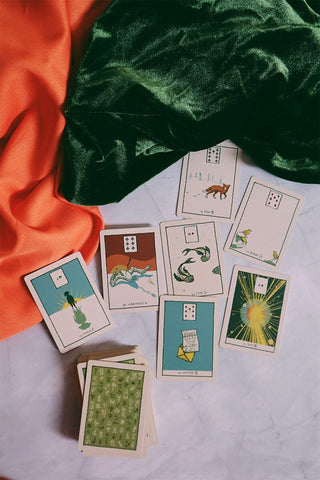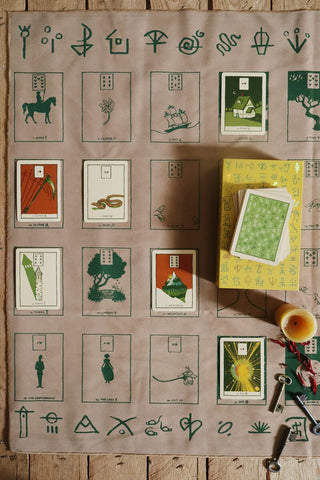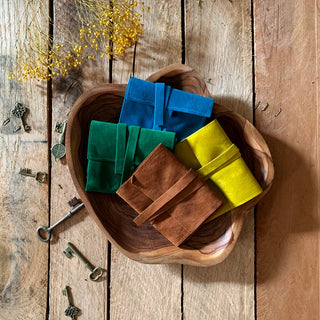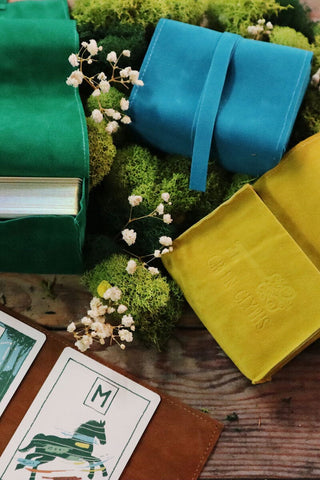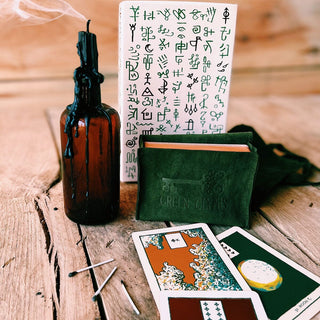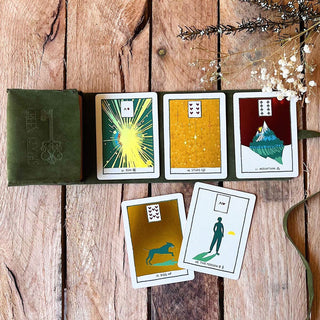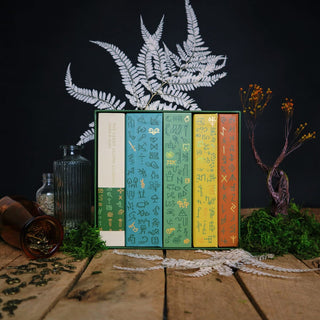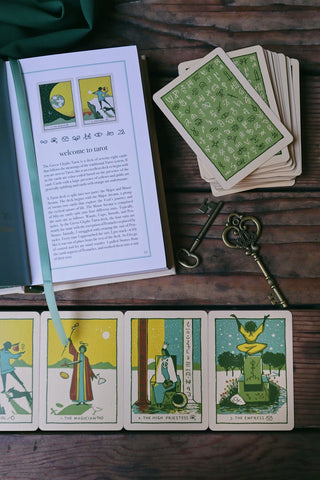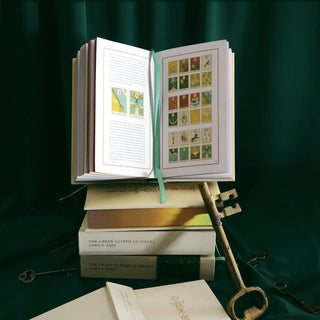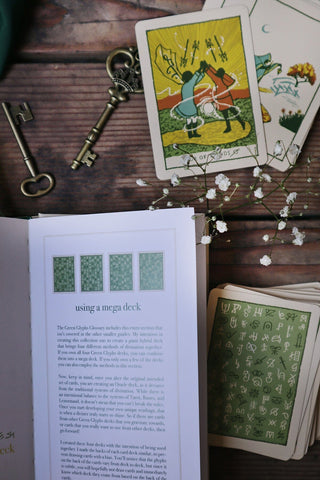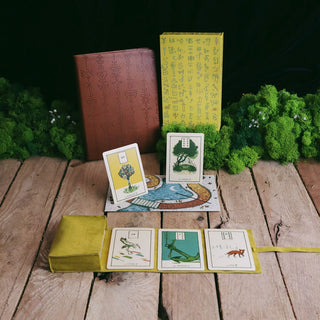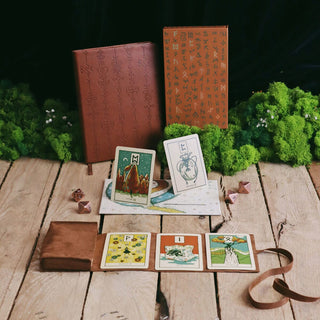GUIDE TO LENORMAND
THE GRAND TABLEAU
The ultimate Lenormand reading is the Grand Tableau, which uses all thirty-six cards in the deck to tell an intricate story. There are a few different layouts and variations in the Tableau, but for simplicity, I will be going over the Grand Tableau of Nines.
In the Grand Tableau of Nines, you will begin by shuffling the deck thoroughly, splitting it, putting it back together, and then laying the cards out in four rows of nine. Having all thirty-six symbols in front of you might be intimidating, but the story the Grand Tableau is telling is not meant to be understood right away. It can take a while to pull out all of the intricacies. Take your time and look for groupings of cards that stand out.
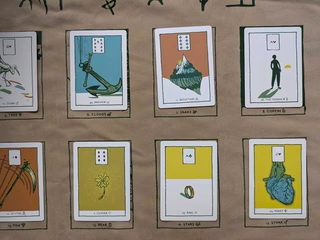
One of the first things for you to do is to locate the querent. This is also called the significator and will be represented by the Gentleman, the Lady, or the Person.
The columns of the Grand Tableau are read as time passing by
so if your significator falls in the final column it won’t be telling us anything about what is coming. It helps to put your question into a period of time. I like nine months or nine weeks, because then you can denote each column to a month or a week. Some people prefer to do a reading for a month or three months. If there is a lot of change happening in your life, you may find that a reading done one month will say something completely different from the next month. The horizontal row of the significator falls on is also worth noting. If it falls in the top row, the significator is of stable mind, and many of the effects of the situation are stemming from the unconscious and exterior influences. If the significator is in the lowest row, it may indicate they have a lot on their mind.
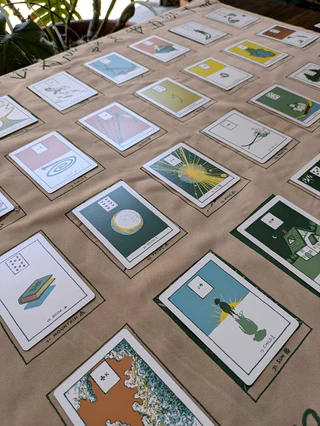
grand tableau checklist
Here is a short, but thorough, checklist of things you have already learned and can now easily employ in a Grand Tableau reading. This is only to get you started. If you happen to notice pairs or groups of cards that seem to be speaking together, pay attention. There are many ways to read a Grand Tableau:
- First read the whole line the significator falls on. This is your story. Read the cards that come before and after, which will describe the events that have led to here and what will soon be coming.
- Read the first three cards in the top line. They speak to the situation at hand and offer advice to the querent.
- Read the diagonal corners of the spread together to get the headline of the story (position 1 + 36 + 9 + 28).
- Search for combinations of cards that stand out and speak about the situation.
- Paint the portrait that you learned in the previous sec.tion and extend any diagonals all the way to the end of the Tableau. These cards are the ones that are currently affecting your life. The upper left diagonal will be past intentions, the lower left will be past influences, the top right will be upcoming intentions, and bottom right will be upcoming influences.
- Observe the colors of the cards and where they have landed. Take note if there are a lot of orange cards clus.tered together. It might suggest there is danger or un.certainty coming to the cards they surround. Take note of where the yellow and gold cards fall. If they are in the future, it is a good sign of positive things to come.
THE HOUSES OF THE TABLEAU
Reading the cards based on the Houses they fall in is one of my favorite aspects of the Grand Tableau. The Houses are laid out in order so the first card falls in House of the Rider, the second falls in House of the Clover, and so on. This order will never change. If you memorize the order in which the cards fall, reading will come easily. For example, if you had a question about love, you would look to the card that falls in the 24th House, House of the Heart. When reading Houses, if a card falls in its own House, it is highlighting the card. So, Tree in House of the Tree would imply that growth or health is an extra important aspect of this reading. Whereas Heart in House of the Heart would suggest that love is an important matter to this person at this point in time.
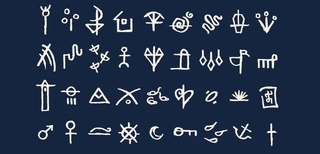
It can be helpful here to use the Lenormand reading cloth I designed so that you have a blueprint of each of the 36 houses underneath the Grand Tableau. This will allow you to easily see what House each card falls in, but this is optional.
The best way to understand how to read the Houses is to think of the Houses as modifiers for the subject that falls on the House. Sort of similar to reading pairs, you would use the Houses to describe what the card is doing in the situation. When asking a question about why you are feeling sick so frequently, you might look to House of Tree for health. If House falls on House of the Tree perhaps the issue stems from your home or your family. It could be he.reditary or maybe you have a mold issue at home. If you are asking about the status of a relationship and find that it is not in your favor, you may look to see what House Heart falls in and what card is in House of the Heart. If Heart falls in House of Mice, it could suggest there was a loss of love or a lessening of feelings.
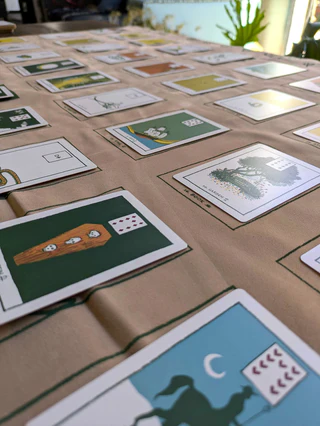
The four Houses that fall down the middle of the Grand Tableau are often good to look at as they offer insight into four aspects of our lives we always have in question. I like to look at these four first to get an overview on what is happening to the inquirer.
The House of the Fox (the 14th House) deals with survival and jobs. The House of the Mice (the twenty-third House) deals with worries and losses. The House of the Moon (the thirty-second House) speaks to our dreams and career.
You won’t look at every House in every reading, but after doing a few sample spreads, you will quickly find the Houses that interest you most. For example, you’ll likely only look in House of the Letter if you are wondering about a message whereas you’ll likely look in the House of the Heart in every reading.
Once you become familiar with the Houses of the Grand Tableau you’ll find a whole new way of understanding Lenormand and the various layers in each card’s meaning.
Knighting
Next, see what cards your significator can “Knight” to. Just as in chess--you make an “L” shape to connect your significator with cards that are two cards in one direction and one card in another direction (see below for example). Sometimes you can Knight to eight cards. Other times just one or two. Read these cards together to confirm what you have learned or add to it. In the truncated example below, we see the significator Knights to Ship (two up, one left), Tree (two up, one right), and Bear (one up, two right). If this was a full Grand Tableau, he may Knight to even more cards.
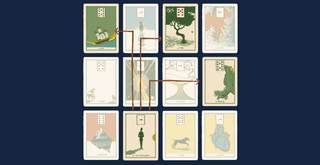
These three cards are important aspects in this querent’s life at the moment. They represent themes or issues that can seem to repeat or are brought to the foreground. Knighting is helpful when asking a specific question of why something may be happening. Say in this reading the querent wants to know why they keep getting sick. Because they Knight to Tree + Bear we can infer it may be the mother’s inherited genes combined with the querent’s frequent traveling (Ship) that is leading to stress. Again, there are multiple ways to interpret these cards together. Keep an open mind when reading them as what the cards are saying may not be the first thing that comes to mind.
crossing paths
When reading a Grand Tableau, you can use the method of “Crossing Paths” to connect two cards in question that appear far away. This is a helpful technique when asking about a lover. If you find that the significator falls far away from the person in question, you can trace the two cards to a meeting point. This point may allude to the reason why these two cards have fallen far from each other. In the example spread below, you will notice that The Gentleman and The Lady are in a spread where they do not fall on the same row or column. Here is where you can use the method of “Crossing Paths” to connect the two cards. To do this, follow each card down its column/row until the two connect. This reveals a hidden influence of Ship and Paths. This can allude to a long distance relationship (Ship) or that The Gentleman has another lover (Paths). Together they would suggest that distance and monogamy may play a key role in this relationship.
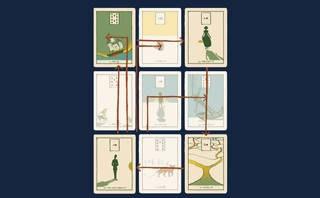
This method can also be applied to cards that do not represent the significator. For example, if you want to find the root of the problem you can trace the crossed paths of the Tree and the Cross, or if you want to find the solution you may trace Key to Cross to find the intersection. This method may not always work--it doesn’t apply when a card falls in the same line as another card you are trying to trace--but it can sometimes lead to a hidden message in the Grand Tableau.

